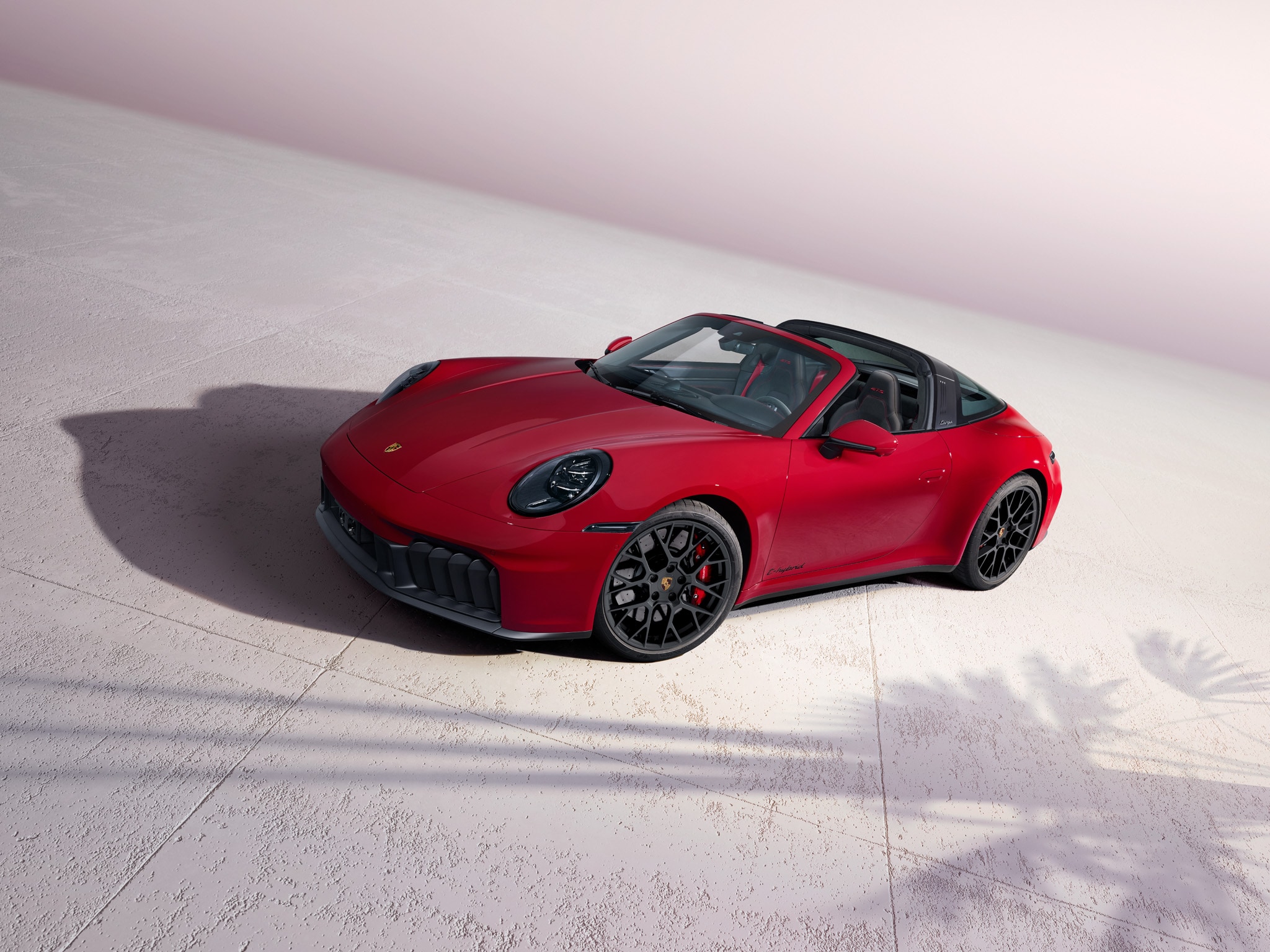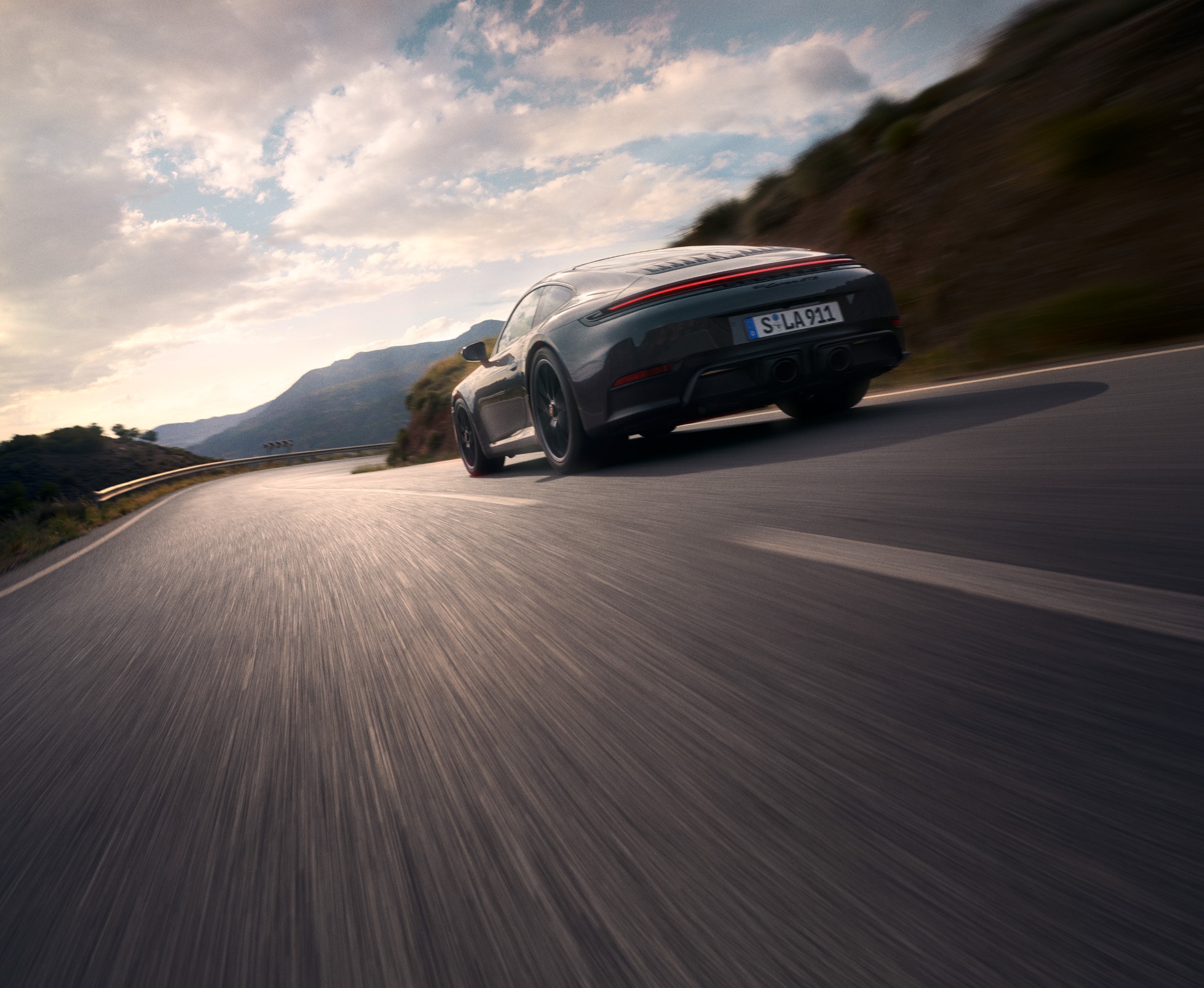
911
911 Models
From $120,100* MSRP
*Manufacturer's Suggested Retail Price. Excludes options; taxes; title; registration; delivery; processing; and handling fees; dealer charges; potential tariffs. Dealer sets actual selling price.
The one and always.
Anyone who dreams of a Porsche usually has one image in their mind: the 911 has been the epitome of an exciting, powerful sports car with day-to-day usability for 60 years. Take a seat behind the wheel of the 911 and become part of a unique community.

Design.
Unmistakable. From every perspective.
Clear lines and a muscular rear section create a much sharper character. On the GTS models, the newly designed front Fascia, with striking vertical aerodynamic elements including adaptive air intake flaps, provides an additional distinctive visual feature.
Headlights.
Expressive and typically Porsche: the new HD-Matrix Design Headlights, including turn signals and 4-point daytime running lights, increase the distinctive look of the 911 from a distance with their lighting signature.
Driver experience.
The instrument cluster with 12.65-inch curved display puts the focus on the central tachometer with the classic five-tube view or the reduced Sport Chrono screen1 as desired.
Porsche Connect.
The further integration of Apple CarPlay® enables improved Siri® functionality and control of vehicle functions. In-car video streaming ensures the best entertainment when not driving on the road.

Performance.
Driving dynamics.
Crucial to the unique 911 driving experience: the optimal set-up. This includes new engine mounts, a completely revised chassis, and even wider wheels to transform the increased power output into breathtaking dynamics.
Porsche Active Suspension Management (PASM).
The Porsche Active Suspension Management (PASM) chassis with an electronically controlled damper system increases stability during fast cornering while also improving comfort - thanks to a new generation of dampers with a wider range of characteristics and greater responsiveness. With the PASM Sport Suspension2, the body sits 10 mm lower than the standard PASM chassis, the springs are stiffer and shorter, and the rear axle has helper springs proven in motor sports - for significantly sportier spring rates.
T-Hybrid technology.
The new T-Hybrid3 technology was derived from motorsport and combines emotive engine sound with outstanding performance. The significant increase in performance and the compact design of the lightweight T-Hybrid system also ensure an optimized power-to-weight ratio. Crucial to the high performance of the T-Hybrid system: the innovative main components. From the completely redeveloped 3.6-liter flat 6 engine with electric exhaust turbocharger to the electric motor integrated in the PDK and the light, powerful traction batter.
6-speed manual transmission.
Short gearshifts invite you to take long detours: the 6-speed manual transmission4 increases precision with sporty gear ratios, fast gear changes, dual-mass flywheel and switchable rev-matching functions. The gearshift lever with shift knob in open-pored walnut and a plaque engraved with "MT" (Manual Transmission) literally offer an even more pleasant gearshift experience.
1 Optionally available for 911 Carrera.
2 Standard for 911 Carrera GTS, 911 Carrera 4 GTS, and 911 Carrera T.
3 Only available for 911 Carrera GTS, 911 Carrera 4 GTS, and 911 Targa 4 GTS.
4 Only available for 911 Carrera T.
How can we help? Ask us anything
* Indicates a required field